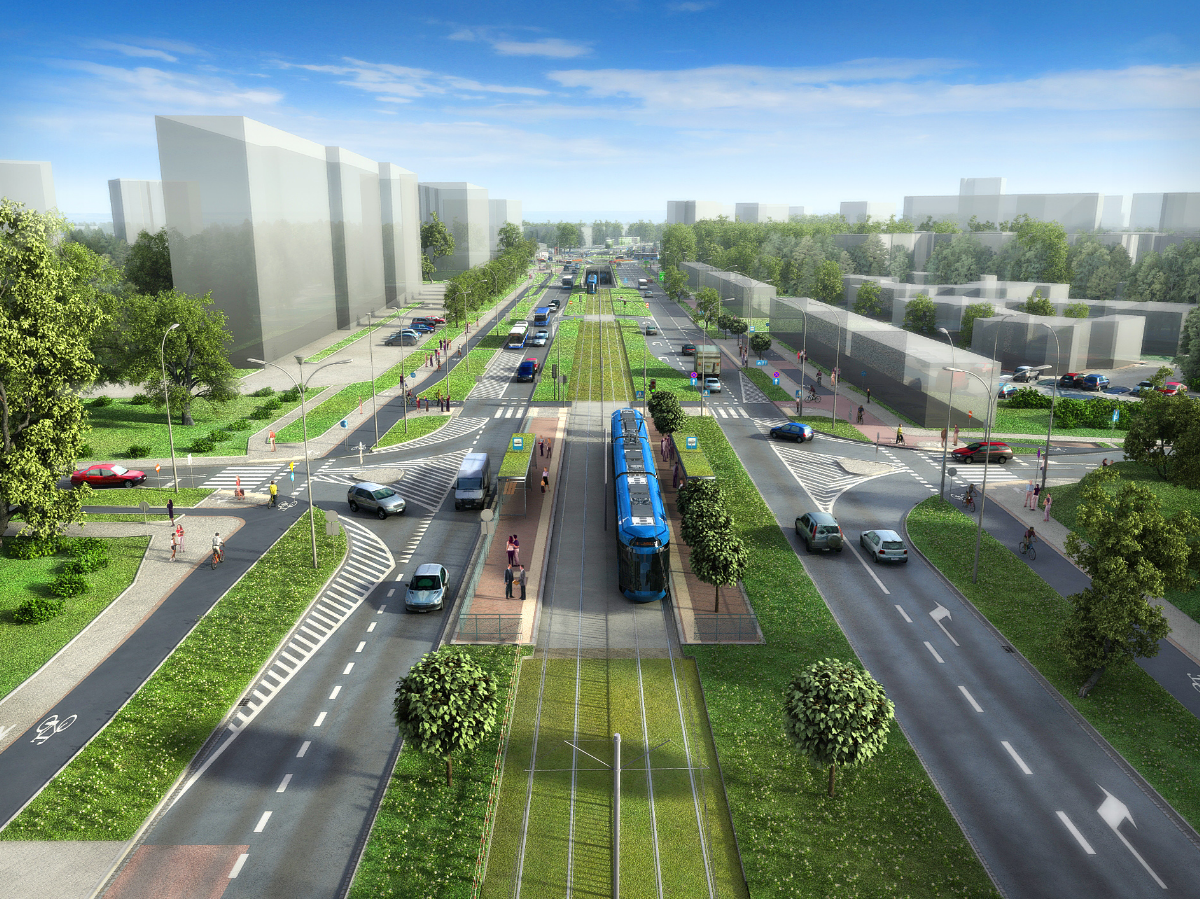New plantings, green tracks and stops, revitalization of the terminus: we know what the green development around the tram route to Mistrzejowice will look like. Residents will gain a modern and sustainable means of transportation, providing an alternative to cars.
The tram route to Mistrzejowice project has received a positive opinion from the Regional Directorate for Environmental Protection (RDOŚ). This is the last step before obtaining a construction permit, allowing work to begin. – The decision just issued by the RDOŚ as part of a reassessment of the investment’s impact on the environment confirms that it complies with the environmental decision issued and can be implemented without hindrance. Among the issues assessed were those concerning greenery, which is of great importance to the local community,” specifies Krzysztof Dziobek, contract director at Gülermak.
The contractor’s individual approach to each specimen and the personal involvement of the construction management made it possible to preserve nearly 200 trees intended for removal in the original design (including dozens growing along Meissnera Street). Positive changes were initiated by a change order issued by a public entity last May, aimed, among other things, at reducing noise pollution and thus the number of noise barriers. In the end, the tree stand management project submitted to the RDEP indicated that there were 1,059 trees in conflict with the planned infrastructure. Investigations of the phytosanitary condition showed that about 60% of them have defects, such as mechanical damage to the bark, drought, decay, frost foliage, traces of pest feeding or significant deviation from the vertical. Seventy-one young, healthy specimens were selected for replanting. 26 of them are already growing in new locations, while the remaining 45 will be moved to their target sites once construction begins. As much as 10,308 square meters of shrubs, flowerbeds and grasses will be added to the project site, more than 2,000 square meters more than the total area of all shrubs to be removed.
New tree plantings along the tram route to Mistrzejowice
– In accordance with the commitment, for each interfering tree we will plant a new one. Their location has been carefully planned to allow the plants to survive in demanding urban conditions, and in the future to provide shade for pedestrians, cyclists and public transport users. All the new plantings have been designed along the project, so there is no question of planting trees in unpopulated areas on the outskirts of the city, as contractors are often accused of,” adds Krzysztof Dziobek.
The selected tree species, including common oak and small-leaved linden, are resistant to pollution, drought, frost and salinity, so they will put down roots in the vicinity of the streetcar line for years to come. The trees designed for the stop platforms will be planted using an anti-compression system, which allows the roots to grow freely under the sidewalk. The private partner used a similar technology for the M2 line of the Warsaw subway.
Green revitalization of the terminus, track and stops
In addition, the project provides for green track using sedum mats along a 4.2-kilometer stretch of single track. These do not require watering or mowing, thus saving natural resources. The route will also feature 19 stops with green roofs, with a total area of 1,900 sqm, giving as much as 4,750 liters of water retention per year. Thanks to dense tree planting, the entire Mistrzejowice terminus will undergo a green transformation. Between the alleys there will be dozens of new trees, appropriately selected shrubs and grasses. The Młyńskie Roundabout will be decorated with a composition of maples, roses and ornamental grasses. A flower meadow will appear at the Barei Roundabout, and eight seedlings will be added to the acacia robinia. A rain garden will also be created adjacent to the traffic circle.
Current design sheets showing future land use along the streetcar line to Mistrzejowice are available at www.tramwajdomistrzejowic.pl


